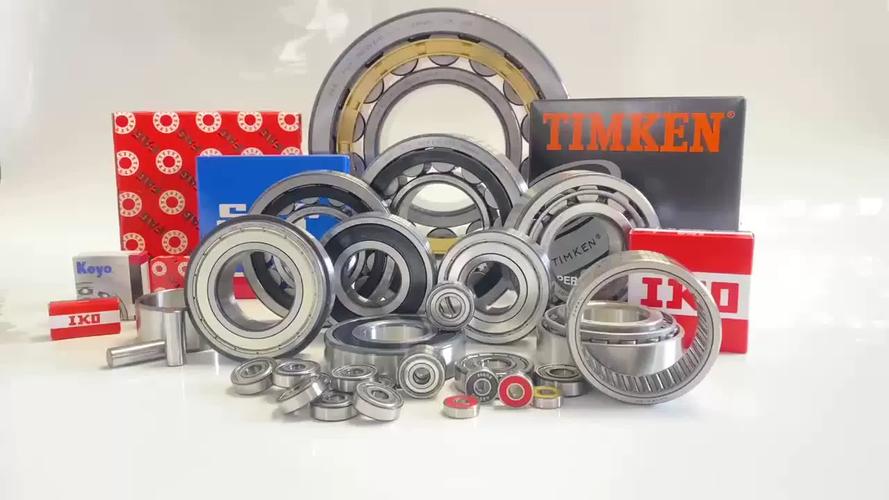SKF Bearings: A Comprehensive Guide to Selection, Maintenance, and Troubleshooting
SKF bearings are globally recognized for their precision engineering, durability, and critical role in industrial machinery. As a leading manufacturer, SKF provides solutions for diverse applications ranging from automotive systems to wind turbines. This article explores key aspects of SKF bearings to help users maximize performance and lifespan.
Table of Contents
1. SKF bearing installation guide2. SKF bearing maintenance best practices
3. SKF bearing cross-reference chart
4. SKF bearing failure analysis
5. SKF bearing lubrication methods
1. SKF Bearing Installation Guide

Proper installation is crucial for SKF bearing performance. Begin by cleaning the housing and shaft, ensuring no contaminants remain. Use induction heaters for interference fits, maintaining temperatures below 120°C (248°F). Always apply axial pressure evenly across the ring face during mounting. For tapered bore bearings, calculate the correct axial drive-up distance using SKF's Drive-Up Calculator. Common mistakes include using hammers directly on bearings (use mounting sleeves instead) and neglecting to check radial clearance post-installation. SKF recommends using their TMFT installation tools for optimal results...
2. SKF Bearing Maintenance Best Practices
Regular maintenance extends SKF bearing service life by 30-50%. Implement vibration analysis every 3 months using SKF CMWA 100 equipment. Monitor temperature thresholds: normal operation ranges between 65°C (149°F) and 85°C (185°F). Establish relubrication intervals using the formula: t = (14,000,000 / n) × (C/P)^3.5, where n = RPM, C = dynamic load rating, P = equivalent dynamic load. Always purge old grease completely before adding fresh lubricant. SKF's LGHB 2 lithium complex grease remains optimal for most industrial applications...
3. SKF Bearing Cross-Reference Chart
When replacing competitor bearings, consult SKF's cross-reference database containing 15,000 equivalents. For example: Timken 3382/3320 corresponds to SKF 22220 CCK/W33. Key parameters include bore diameter (must match within 0.001"), width series (2 = light, 3 = medium), and cage material (steel vs polymer). Always verify dynamic load ratings - SKF Explorer series typically offers 10-20% higher capacity than standard bearings. Use SKF's interactive replacement tool online for real-time comparisons...
4. SKF Bearing Failure Analysis
Over 34% of premature failures stem from improper lubrication. Common failure modes include flaking (material fatigue), smearing (micro-welding), and false brinelling. Conduct root cause analysis using SKF's BEAST software: input vibration spectra, wear particle analysis, and operating conditions to receive failure diagnostics. For example, axial cracks often indicate excessive preload, while cage fractures suggest alignment issues. SKF's REMP inspection service provides professional failure pattern recognition...
5. SKF Bearing Lubrication Methods
Select lubrication methods based on operating speed (n x dm value). For dm < 300,000 mm/min, use grease lubrication. Above this threshold, opt for oil-air systems. SKF's VOGEL automatic lubricators maintain optimal grease levels in hard-to-reach locations. When using oil bath lubrication, maintain oil level at the lowest rolling element's center. High-speed applications (>1 million dn) require jet lubrication with ISO VG 32 oil. Always follow SKF's relubrication quantity formula: G = 0.005 × D × B, where D = bearing outer diameter (mm), B = width (mm)...
Understanding these five critical aspects of SKF bearings can dramatically improve your equipment's operational efficiency. From precise installation techniques to advanced failure diagnostics, each element contributes to extended bearing life and reduced downtime. The following sections will delve deeper into specialized applications, including extreme temperature environments and high-contamination scenarios, providing actionable strategies for maintenance engineers.
In summary, SKF bearings deliver unmatched performance when properly selected, installed, and maintained. By implementing the guidelines outlined in this comprehensive guide, operators can achieve 20-40% longer service life, reduce energy consumption by up to 15%, and minimize unplanned maintenance costs. Always consult SKF's technical documentation for application-specific recommendations.




 13869596835
13869596835